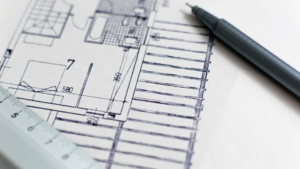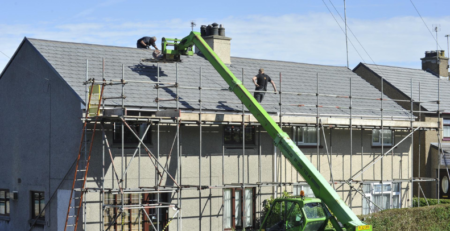Constructing Your Home in the UK
The journey of constructing your home from the ground up is akin to painting on a blank canvas. The process allows you to tailor every detail to your preferences, from the architectural design to the interior finishes. However, the path to realizing your dream home in the UK is peppered with crucial considerations such as construction methods, budgeting, planning permissions, and much more. This article delves into these aspects, offering a comprehensive guide that paves the way for a smooth home-building experience.
Detached and Beyond: Understanding Your Options
The UK’s housing market is as varied as it is vibrant, offering something for everyone. At the heart of this diversity are detached homes, which stand alone, offering unparalleled privacy and space for those who value their own company or have a large family. These homes are ideal for those who dream of expansive gardens or perhaps even a private driveway, embodying the quintessential family home.
Just a step away, semi-detached houses offer a perfect compromise between community and solitude. Sharing a wall with just one neighbour, these homes provide a sense of togetherness without sacrificing privacy. They’re perfect for those who enjoy the occasional chat over the fence but still appreciate their own space.
Terraced houses, often found lining the streets of the UK’s bustling towns and cities, are rich with character and history. These homes, connected in a row, foster a strong sense of community and are ideal for those who love to be in the thick of things, where every neighbour knows your name.
For urban dwellers, flats offer a practical and often more affordable solution to city living. These compact living spaces come with the convenience of city life right on your doorstep. Within this category, you’ll find maisonettes, which offer the feel of a house with their own separate entrance, and bungalows, which cater to those who prefer living on a single floor.
End-of-terrace homes, another intriguing option, combine the best of terraced living with a touch more privacy and often a little extra garden space, positioned as they are at the edge of a row.
Traditional vs. Modern Techniques: What Suits Your Style?
The UK’s architectural landscape is a testament to the blend of tradition and innovation that characterizes the nation’s approach to house building. The traditional method of brick or block wall construction, with its two-layered walls – an internal blockwork and an external layer of brick or stone – remains a staple. This tried and tested method provides solid structural integrity and has stood the test of time, offering a sense of permanence and security.
On the other side of the spectrum, timber frame construction offers a nod to the past with its rich history, particularly in Scotland where it enjoys considerable popularity. This method, while sometimes viewed as traditional, offers modern benefits such as speed of construction and flexibility in design. Timber frame houses can be categorized into two types: timber framing, which relies on wooden pegs for securing the frame’s joinery, and post-and-beam, which uses metal fasteners. Both styles offer their own unique aesthetic and structural benefits, making timber frame construction a compelling choice for those looking for something a bit different.
Metal frames and concrete-based construction methods signal a move towards modernity, introducing new possibilities in terms of design and durability. These contemporary approaches open up new horizons in construction, offering buildings that can span wider spaces and accommodate more ambitious designs.

From Planning Permission to the Final Touches
The adventure of building your own home is both thrilling and complex, beginning with the crucial step of obtaining planning permission. Without this legal green light, your dream project could face insurmountable obstacles. The application process, which involves a fee, can result in either an outline plan, giving a broad idea of the proposed development, or a detailed plan that lays out the specifics.
The role of an architect in this journey cannot be overstated. Not only can they help in crafting a design that meets your vision and complies with local regulations, but they also play a pivotal role in navigating the planning permission process itself. Their expertise ensures that the envisioned home is not only beautiful but also structurally sound and safe.
Assembling a skilled construction team is the next step, requiring careful selection of builders, plasterers, interior designers, electricians, and more. This stage is all about translating the architect’s plans into reality, a process that demands coordination, communication, and a keen eye for detail.
Project management becomes a linchpin in ensuring that the build goes according to plan. Whether you take on this role yourself or hire an experienced project manager, overseeing the construction is crucial for keeping the project on track, within budget, and up to standard.
Insurance and budgeting are foundational elements of the building process, protecting your investment and ensuring that the financial aspects of the project are carefully managed. From securing quotes to managing expenditures and considering the reclaiming of VAT on building materials, each step requires careful thought and planning.
Financing Your Build: Costs, Mortgages, and Insurance Essentials
The financial journey of building a home is intricate, encompassing initial cost estimates, mortgage arrangements, and insurance necessities. The cost of building a home varies widely across the UK, influenced by regional differences in wages, the size and complexity of the property, and the choice of contractors.
Securing a mortgage for homes built using non-traditional methods can be particularly challenging, given the perceived risk by lenders. However, with thorough research and direct discussions with potential lenders, it’s possible to find financial support for a wide range of construction methods.
The potential to reclaim VAT on building materials represents a significant saving opportunity, underscoring the importance of detailed financial planning and advice. This aspect, along with the myriad other costs involved in building a home, highlights the critical nature of thorough budgeting and financial management throughout the construction process.
Do I Need Insurance to Build a House?
Though it’s not a requirement by law to have insurance for your self-build, it stands as a highly recommended safeguard. Imagine, for a moment, the myriad of things that could go wrong during the construction of your dream home. From accidental damage to unforeseen disasters, the risks are varied and often unexpected. Securing insurance for your self-build project is akin to putting a safety net under your financial and emotional investment in the project.
Insurance for self-builds serves as a protective umbrella, covering a range of potential issues that could otherwise derail your project and financial stability. It’s about more than just peace of mind; it’s a practical step to ensure that you’re not left out of pocket should the unexpected occur. Whether it’s damage caused by weather, accidents on site, or theft of materials, the right insurance policy can cover these events, allowing your project to proceed with minimal disruption.
Considering the vast investment of time, money, and emotion that goes into building a home, the importance of insurance cannot be overstated. It’s a tool that safeguards not just the physical structure as it’s being built, but also the people working on your property. With contractors and workers coming and going, having comprehensive insurance means that you’re protected against liability should anyone be injured on site.
In essence, while skipping on insurance might seem like a cost-saving measure in the short term, the potential financial ramifications of doing so can be significant. Engaging with an insurance expert can help you navigate the complexities of self-build insurance, ensuring that you have the right coverage for your specific needs. This step is crucial in transforming your dream home from a blueprint into reality, securely and responsibly.
The Final Brick: Advantages, Disadvantages, and Concluding Thoughts
Embarking on the journey of building your own home is undoubtedly one of the most fulfilling projects you can undertake. It’s an opportunity to put a personal stamp on every corner, selecting designs, materials, and layouts that perfectly align with your vision. This level of personalization is unparalleled, offering the joy and satisfaction of creating a space that truly reflects your tastes, needs, and lifestyle. Watching as the foundations are laid, walls erected, and rooms shaped according to your desires is a uniquely rewarding experience.
However, as Jamie Johnson, CEO of FJP Investment, notes, “Building a home from scratch offers the unique opportunity to tailor every aspect to your vision, but it demands a level of dedication and resilience not to be underestimated.” This observation underscores the reality that the home-building journey, while exciting, is not without its challenges. The process demands a comprehensive commitment, encompassing not just financial resources but also time, effort, and patience.
Logistical Complexities
The logistical complexities involved in coordinating contractors, securing materials, and ensuring compliance with planning permissions can be daunting. The financial aspect, too, requires meticulous planning and management, from budgeting for unforeseen costs to navigating the intricacies of construction loans and mortgages. Moreover, the emotional investment in seeing through a project of this magnitude can be immense, with stress and anxiety often accompanying the excitement and anticipation.
Despite these challenges, the decision to build your home is a deeply personal one, influenced by a myriad of factors unique to each individual or family. With the right planning, team, and mindset, the hurdles can not only be overcome but also become part of a rewarding journey toward creating your ideal living space.
In conclusion, building your own home is an adventure that offers profound rewards, both in the creation process and in the years of enjoyment that follow. It is a path that requires careful consideration, thorough planning, and a resilient spirit. Yet, for those who choose to embark on this journey, the outcome is a home that is not just a place to live, but a personal masterpiece that embodies their dreams, tastes, and very essence.
ARE YOU READY TO START INVESTING?
Subscribe to our mailing list now for exclusive deals, investment guides and the latest information from the property market.







